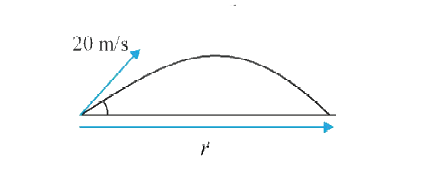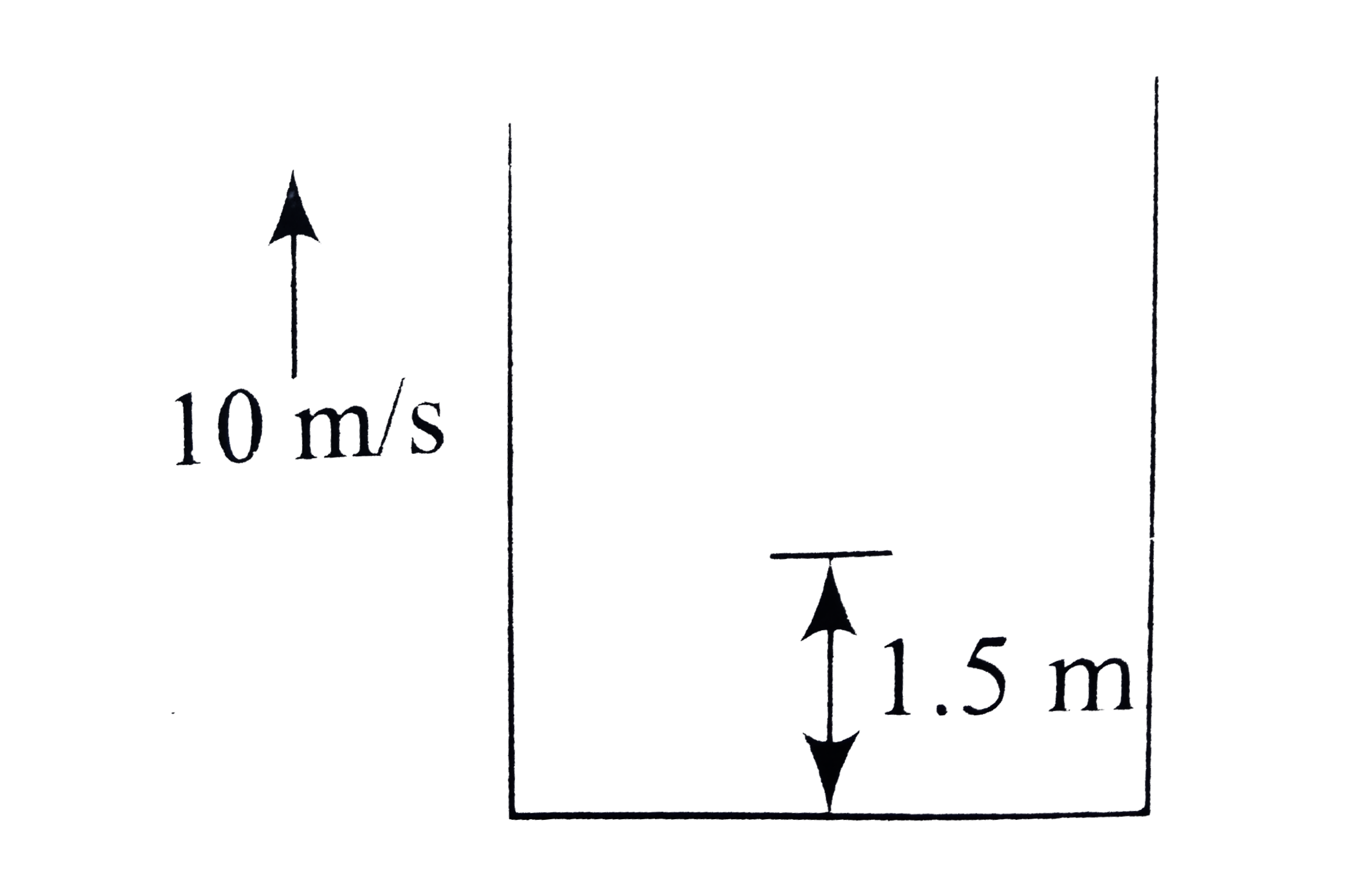The initial speed of an arrow shot from a bow, at an elevation of 30∘, is 15ms–1. Find its velocity when it hits the ground back
To solve the problem of finding the velocity of an arrow when it hits the ground after being shot at an elevation of 30 degrees with an initial speed of 15 m/s, we can follow these steps:
Step 1: Identify the components of the initial velocity
The initial velocity u can be broken down into horizontal and vertical components using trigonometric functions:
- The horizontal component ux=ucosθ=15cos30∘
- The vertical component uy=usinθ=15sin30∘
Calculating these components:
- ux=15⋅√32=15⋅0.866=12.99m/s (approximately 7.5√3m/s)
- uy=15⋅12=7.5m/s
Step 2: Calculate the time of flight
The time of flight T for a projectile is given by the formula:
T=2uyg
where g is the acceleration due to gravity (approximately 10m/s2).
Substituting the values:
T=2⋅7.510=1510=1.5s
Step 3: Calculate the final vertical velocity
The final vertical velocity vy when the arrow hits the ground can be calculated using the equation:
vy=uy−gT
Substituting the values:
vy=7.5−10⋅1.5=7.5−15=−7.5m/s
(The negative sign indicates that the direction is downward.)
Step 4: Calculate the final velocity
The final velocity v when the arrow hits the ground can be calculated using the Pythagorean theorem, combining the horizontal and vertical components:
v=√v2x+v2y
Substituting the values:
v=√(7.5√3)2+(−7.5)2
Calculating:
v=√(7.52⋅3)+(7.52)=√(56.25⋅3)+56.25=√168.75+56.25=√225=15m/s
Conclusion
The velocity of the arrow when it hits the ground is 15m/s.
---
The initial velocity u can be broken down into horizontal and vertical components using trigonometric functions:
- The horizontal component ux=ucosθ=15cos30∘
- The vertical component uy=usinθ=15sin30∘
- ux=15⋅√32=15⋅0.866=12.99m/s (approximately 7.5√3m/s)
- uy=15⋅12=7.5m/s
The time of flight T for a projectile is given by the formula:
T=2uyg
where g is the acceleration due to gravity (approximately 10m/s2).
T=2⋅7.510=1510=1.5s
The final vertical velocity vy when the arrow hits the ground can be calculated using the equation:
vy=uy−gT
Substituting the values:
vy=7.5−10⋅1.5=7.5−15=−7.5m/s
(The negative sign indicates that the direction is downward.)
The final velocity v when the arrow hits the ground can be calculated using the Pythagorean theorem, combining the horizontal and vertical components:
v=√v2x+v2y
Substituting the values:
v=√(7.5√3)2+(−7.5)2
Calculating:
v=√(7.52⋅3)+(7.52)=√(56.25⋅3)+56.25=√168.75+56.25=√225=15m/s
The velocity of the arrow when it hits the ground is 15m/s.
Similar Questions
If a projectile is projected with initial speed u and angle θ from horizontal then what will be its average power up to time when it will hit the ground again ?
View SolutionFrom the top of a tower of height 40m, a ball is projected upward with a speed of 20ms−1 at an angle of elevation of 30∘. Then the ratio of the total time taken by the ball to hit the ground to the time taken to ball come at same level as top of tower.
View SolutionFrom the top of a tower of height 40m, a ball is projected upward with a speed of 20ms−1 at an angle of elevation of 30∘. Then the ratio of the total time taken by the ball to hit the ground to the time taken to ball come at same level as top of tower.
View SolutionA projectile projected with initial velocity 20m/s and at and angle of 30∘ from horizontal. Find the total work done when it will hit the ground.

View SolutionAn aeroplane is flying vertically upwards. When it is at a height of 1000m above the ground and moving at a speed of 367m/s., a shot is fired at it with a speed of 567 ms−1 from a point directly below it. What should be the acceleration of aeroplane so that it may escape from being hit?
View SolutionA man standing on the edge of a cliff throws a stone straight up with initial speed (u) and then throws another stone straight down with same initial speed and from the same position. Find the ratio of the speeds. The stones would have attained when they hit ground at the base of the cliff.
View SolutionWhen an arrow is shot from a bow, it has kinetic energy in it. Explain briefly from where does it get its kinetic energy.
View Solution
A boy in the elevator shoots a bullet in a vertical upward direction from a height of 1.5 m above the floor of the elevator. There is no roof in the elevator. The floor of the elevator is at 50 m from ground at the instant when velocity of the elevator is 10 m/s in upward direction. The bullet strikes the floor of the elevator in 2 seconds. The initial speed of the bullet is 15 m/s relative to the elevator.
Q. Find the maximum height reached by the bullet relative to the ground :
View SolutionA body is projected horizontally from the top of a tower with initial velocity 18ms−1. It hits the ground at angle 45∘. What is the vertical component of velocity when it strikes the ground ?
View SolutionA projectile is fired form the top of a 40 m high cliff with an initial speed of 50 m/s at an unknown angle. Find its speed when it hits the ground.
View Solution
